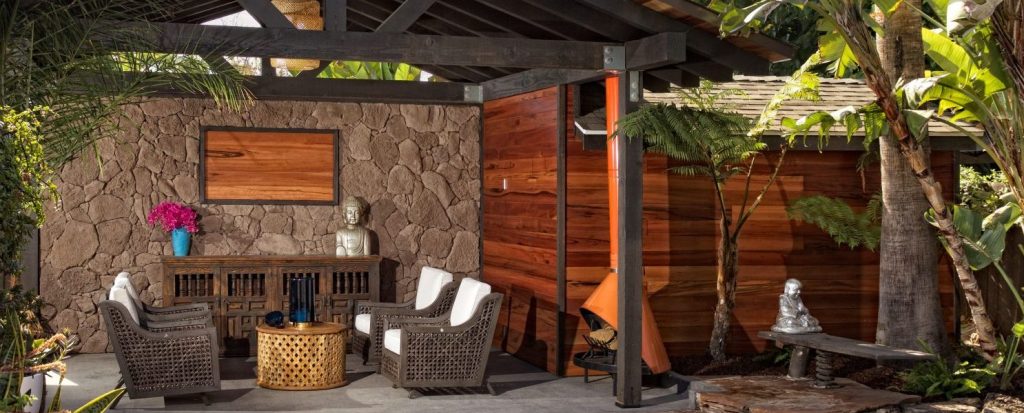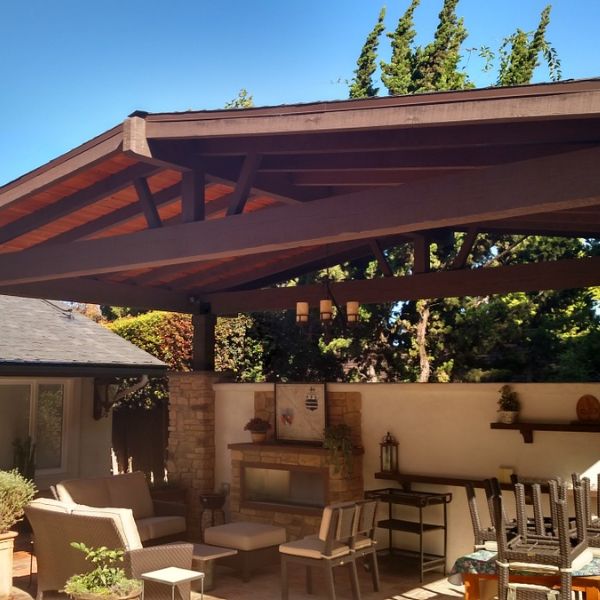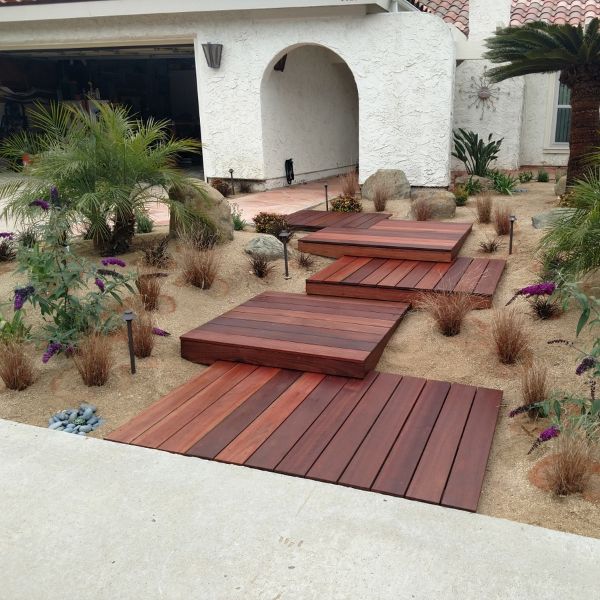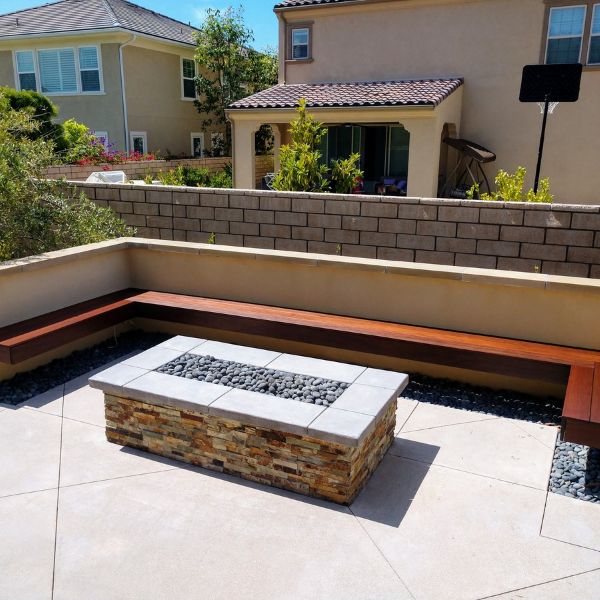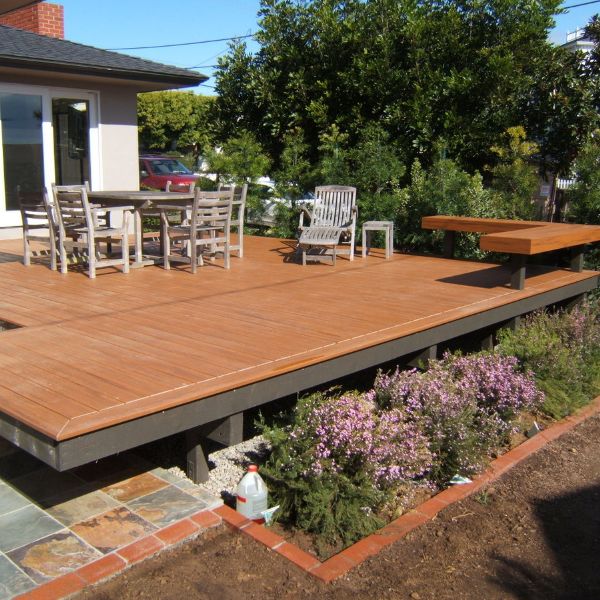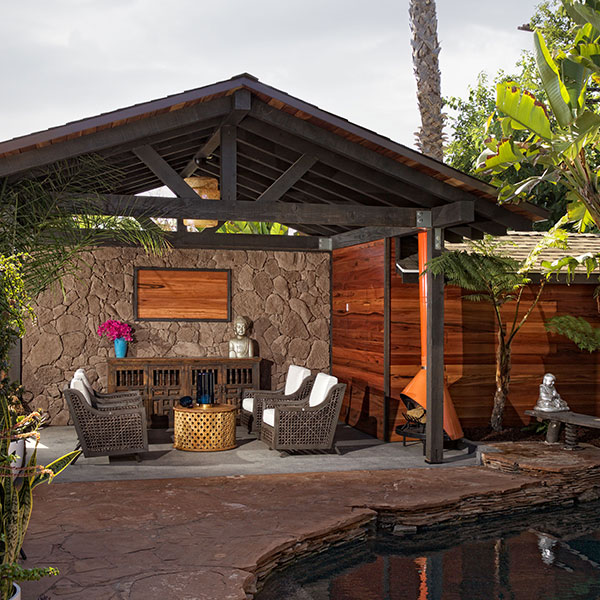Redefine Outdoor Aesthetics with Sustainable Cloverscapes
Walk this way directly into a greener future! With the escalating need to adopt sustainable practices, incorporating clover in your permeable walkwaysbecomes not an option but a necessity. Discover the benefits hidden in this simple act of transforming landscapes and reducing environmental impact worldwide.
Wilson Woodscape can transform ordinary spaces into lush, eco-friendly havens. Our San Diego landscape contractor, Jeff Wilson, will explain how this humble plant is redefining outdoor aesthetics while preserving our planet for future generations.
What Is Permeability in Landscaping?
Permeabilityrefers to whether water can pass through a surface into the ground. In the context of walkways and landscapes, permeable materials like gravel, porous pavers, and natural stone allow rainwater to drain through to the soil below.
Imagine heavy rains hitting an impermeable surface like asphalt or concrete. The water would accumulate and create puddles or flow rapidly into nearby drains and ditches, potentially causing localized flooding or overwhelming existing drainage infrastructure. On the other hand, permeable walkways act as sponges, absorbing water and gradually releasing it back into the ground.
The benefits of permeable landscaping include:
- Preventing stormwater runoff and flooding
- Recharging groundwater supplies
- Reducing the burden on drainage systems
- Promoting healthy soil and plant growth
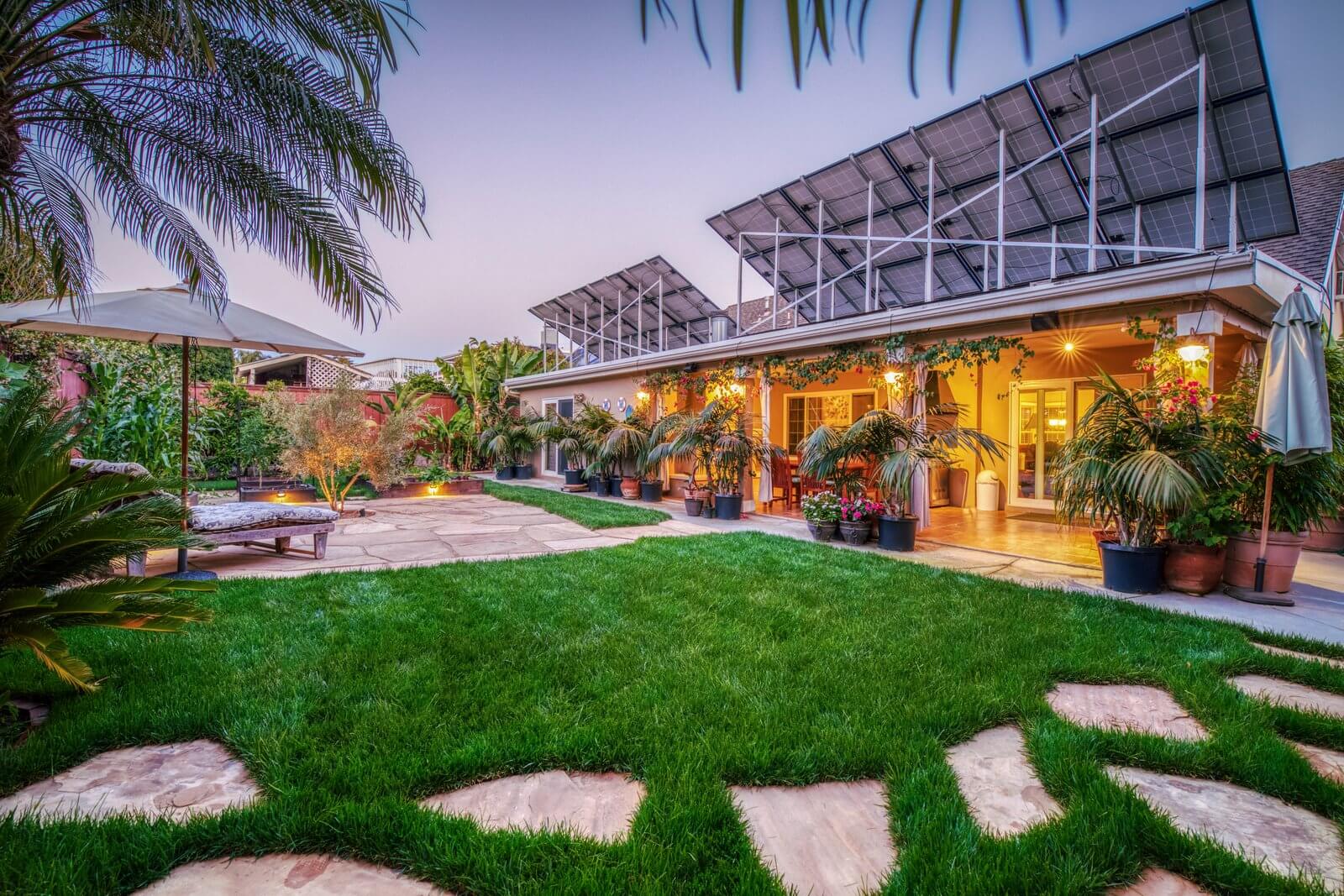
Benefits of Employing Sustainable Pathways
Sustainable pathwaysoffer numerous advantages beyond traditional hardscape options like concrete or asphalt. By incorporating environmentally friendly elements into your walkways, such as adding clover to permeable surfaces, you can enhance both aesthetics and functionality while contributing to ecological well-being.
Benefits include:
- Adding clover to permeable surfaces provides natural soil conservation and improvement. The roots of clover plants stabilize soil, prevent erosion, and enhance fertility.
- Clover acts as a natural weed suppressant, reducing the need for chemical herbicides. By covering soil fully, clover crowds out invasive weeds.
- Sustainable pathways with clover require less maintenance compared to turf grass. Clover is drought resistant and needs little mowing or watering to thrive.
- Clover attracts and supports pollinators like bees, butterflies, and hummingbirds. This promotes biodiversity and ecological health in urban spaces.
- The lush green clover and colorful blooms create an aesthetically pleasing environment to enjoy nature’s beauty, even in developed areas.
Soil Conservation and Improvement
Sustainable pathways with clover provide specific soil improvements. By integrating clover into permeable walkway design, you can enhance soil health in the following ways:
- With its deep root system, clover stabilizes soil and controls erosion.
- Clover’s dense growing habit naturally crowds out weeds, minimizing the need for chemical herbicides.
- Clover enriches the soil by fixing nitrogen from the air through a natural process, reducing reliance on artificial fertilizers.
- The nitrogen fixed by clover provides essential nutrients for the robust growth of nearby plants without excessive fertilizer additions.
Heat Abatement and Aesthetics
In urban environments, concrete walkways and buildings absorb and radiate heat, increasing the urban heat island effect. However, incorporating clover into permeable walkways offers a practical solution for mitigating this issue while enhancing the aesthetics of your outdoor spaces.
Clover offers natural heat abatement, making it an appealing choice for sustainable pathways. By retaining moisture, clover cools the surrounding environment. Replacing concrete with clover combats urban heat islands, creating more comfortable spaces on hot days.
Visually, clover enhances aesthetics with lush green foliage. The vibrant color and texture contrast stark concrete, complementing the landscape design. Clover also attracts beneficial pollinators, supporting biodiversity. Overall, clover walkways mitigate heat while creating inviting, ecologically healthy spaces.
Incorporating Permeable Walkways in Your Backyard
Permeable walkways made of porous pavers offer sustainability and customization for backyards. These walkways allow rainwater to drain through gaps in the pavers, reducing runoff and puddle formation.
The installation process of permeable walkways involves excavating the area and creating a sub-base that consists of crushed stone or gravel. This sub-base promotes proper drainage while providing stability for the pavers. Water can penetrate the underlying layers of pavers due to the openings or gaps between them.
Our landscape contractor can fill these gaps with grass, gravel, or plants, adding an attractive visual element to your walkway while further enhancing its sustainability. When you decide on permeable walkways, the maintenance is quite different compared to concrete or asphalt.

Considerations When Adding Permeable Walkways
Permeable walkways can be a great addition to any backyard, bringing both sustainability and visual appeal. When incorporating permeable walkways, it’s important to evaluate your unique needs and environment.
Here are some tips for successfully adding permeable walkways to your backyard:
- Traffic Flow: Permeable walkway materials should be able to withstand frequent traffic while maintaining stability and allowing rainwater to infiltrate through the surface.
- Materials: There are various material options to select from such as pea gravel, brick pavers, or recycled rubber, which should be chosen based on climate, soil type, usage, and aesthetic preferences.
- Maintenance: Compared to traditional concrete or pavement, permeable materials often require more frequent maintenance, like sweeping debris from gaps between pavers.
- Environmental Benefits: While permeable walkways involve a bit more maintenance, their environmental benefits, like preventing erosion and absorbing rainwater underground make them well worth the extra care.
Adding thoughtfully designed permeable pathways to your backyard can significantly reduce stormwater runoff while creating an attractive space to enjoy.
Choosing Materials for Permeable Walkways
When it comes to sustainable landscaping, choosing the right materialfor your permeable walkway is crucial. Not all materials offer the same level of permeability, durability, and affordability.
Different materials options that are suitable for permeable walkways include:
- Gravelis an affordable and low-maintenance option that provides excellent permeability. However, it may shift underfoot in high-traffic areas and require compacting.
- Recycled plastic paversmimic the look of concrete pavers but are made from post-consumer recycled plastic, making them lightweight, durable, and highly permeable.
- Natural stone paversoffer exceptional durability and aesthetic appeal, though they tend to be more expensive than other options while still allowing for drainage.
- Bricks and concrete paverscome in a wide range of shapes, sizes, colors, and patterns to complement any landscape design but require re-sealing every few years as they can hold water if unprotected.
- Grass pavers and reinforced turfconsist of plastic or concrete grids filled with soil that allow grass to grow through, providing structural support for foot traffic while enabling water infiltration and a green appearance.
Combining Clover and Permeable Walkways for a Sustainable Landscape
Adding clover as a ground cover to permeable walkways creates a lush, sustainable backyard landscape. Clover is a low-maintenance plant that enriches soil health by fixing nitrogen, reducing reliance on synthetic fertilizers. With its dense growth, clover naturally suppresses weeds, decreasing the need for chemical herbicides. Clover attracts pollinators like bees and butterflies, supporting biodiversity and a healthy backyard ecosystem. Clover is also drought resistant, aligning well with sustainable landscaping principles.
Permeable walkways allow rainwater to infiltrate into the soil, preventing stormwater runoff and improving drainage. Together, the clover provides ground cover that enriches and stabilizes the soil while beautifying the permeable walkways with pollinator-friendly blooms. The walkways direct rainwater to the clover’s root system, nurturing growth without excessive watering. By combining clover and permeable materials, you can create a backyard space that’s visually appealing, ecologically friendly, and naturally resilient.
Create Your Own Sustainable Backyard Space
Incorporating clover into your permeable walkways creates a backyard oasis that benefits both you and the planet. This sustainable landscape is naturally resilient, visually stunning, and harmoniously balanced.
Contact Wilson Woodscapeat (619) 838-1398to discuss your sustainable landscaping goals. Our San Diego landscape contractor can help design and build your ideal eco-friendly backyard paradise.

